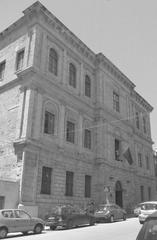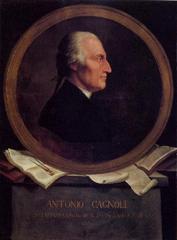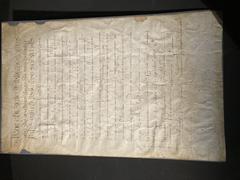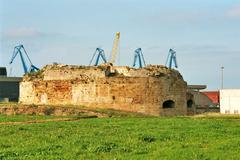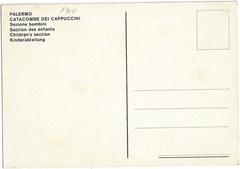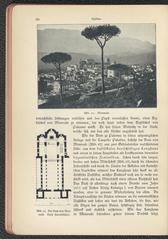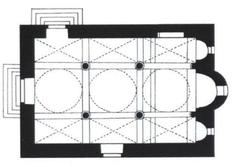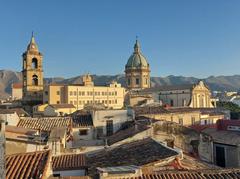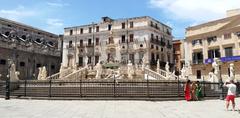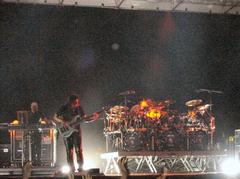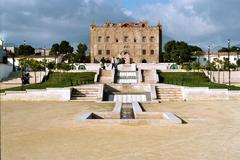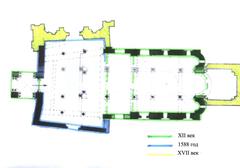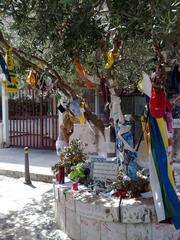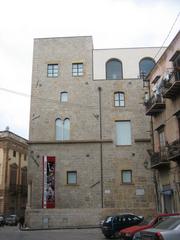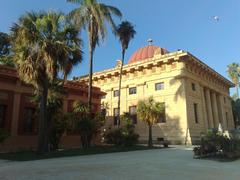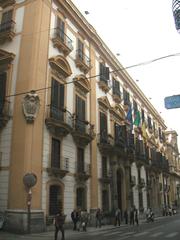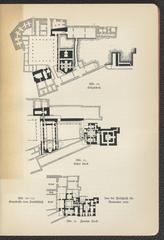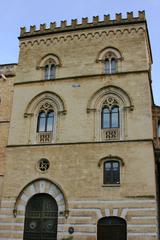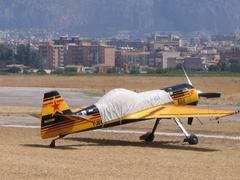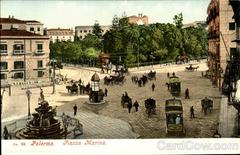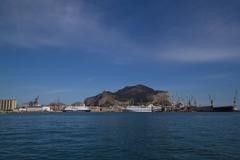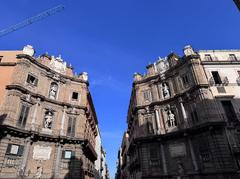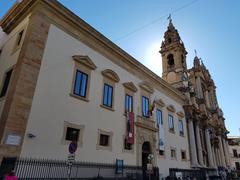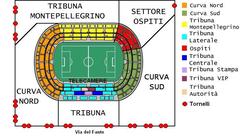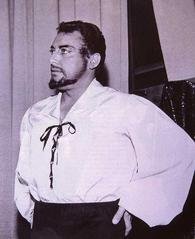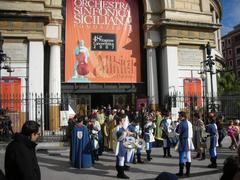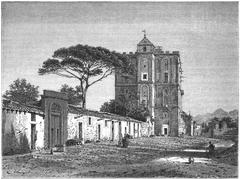Visiting Hours, Tickets, and Historical Sites of Cattedrale Santa Vergine Maria Assunta in Palermo
Publication Date: 17/07/2024
Overview of Cattedrale Santa Vergine Maria Assunta
The Cattedrale Santa Vergine Maria Assunta, more commonly known as the Palermo Cathedral, is a monumental testament to the rich and diverse history of Palermo, Italy. Situated in the heart of Sicily’s capital, this architectural marvel embodies a unique blend of Norman, Moorish, Gothic, Baroque, and Neoclassical styles, each layer telling a story of the island’s complex past. The cathedral’s origins date back to 1185, when it was commissioned by the Norman Archbishop Walter Ophamil, and it was constructed on a site that had previously hosted a Byzantine basilica and a mosque during the Arab rule of Sicily (Palermo Cathedral History). This guide aims to provide a comprehensive overview of the Palermo Cathedral, covering its historical significance, architectural features, visitor information, and travel tips, making it an essential read for anyone planning a visit to this iconic landmark.
Contents
- Introduction
- History
- Origins and Early Construction
- Norman Influence
- Arab-Norman Architectural Synthesis
- Gothic and Renaissance Additions
- Baroque and Neoclassical Transformations
- Modern Restorations
- Historical Significance
- Visitor Information
- Visiting Hours
- Ticket Information
- Guided Tours
- Special Events
- Travel Tips
- Nearby Attractions
- Accessibility
- Photographic Spots
- FAQ
- Conclusion
- Sources
Introduction
The Cattedrale Santa Vergine Maria Assunta, or Palermo Cathedral, is a magnificent monument that stands as a testament to the rich and diverse history of Palermo, Italy. Whether you’re a history buff, an architecture enthusiast, or a casual traveler, the Palermo Cathedral offers something for everyone. In this article, we will delve into the cathedral’s fascinating history, provide practical visitor information including visiting hours and ticket prices, and offer tips on what to see and do during your visit. Read on to discover why the Palermo Cathedral is a must-visit landmark in Sicily.
History
Origins and Early Construction
The Cattedrale Santa Vergine Maria Assunta was commissioned by the Norman Archbishop Walter Ophamil in 1185. The site chosen for the cathedral was historically significant, having previously housed a Byzantine basilica and later a mosque during the Arab rule of Sicily. This layered history is reflected in the architectural elements of the cathedral, which exhibit a blend of Norman, Moorish, Gothic, Baroque, and Neoclassical styles.
Norman Influence
The initial construction under Norman rule was characterized by a Romanesque architectural style, prevalent in Europe during the 12th century. The Normans, who had conquered Sicily in 1072, sought to establish their dominance and Christian faith through monumental architecture. The cathedral’s original structure featured a Latin cross plan, with a nave and two aisles separated by columns. The exterior was adorned with intricate carvings and decorative elements showcasing the craftsmanship of the period.
Arab-Norman Architectural Synthesis
One of the most remarkable aspects of the Palermo Cathedral is its synthesis of Arab and Norman architectural elements. This fusion is particularly evident in the cathedral’s exterior, where the use of pointed arches and geometric patterns reflects the influence of Islamic art and architecture. The cathedral’s apse, with its blind arches and decorative motifs, is a prime example of this unique blend, showcasing the cultural exchange that occurred in Sicily during the Norman period.
Gothic and Renaissance Additions
The Palermo Cathedral underwent significant modifications during the Gothic and Renaissance periods. In the 14th century, the interior was transformed with Gothic elements, including pointed arches and ribbed vaults. During the Renaissance, further alterations included a new façade and chapels dedicated to various saints, such as the Chapel of Santa Rosalia, completed in 1625 with elaborate Baroque decorations.
Baroque and Neoclassical Transformations
The 18th century brought major Baroque renovations, including a new dome designed by architect Ferdinando Fuga. The interior was redecorated with ornate altars, sculptures, and frescoes. In the 19th century, Neoclassical modifications were made, adding a new portico and reorganizing the interior space to create a more harmonious layout.
Modern Restorations
Modern restoration projects have aimed to preserve the cathedral’s historical and architectural integrity. Efforts in the early 20th century focused on restoring Norman features, while more recent projects have addressed structural stability and conservation of exterior stonework.
Historical Significance
The Palermo Cathedral holds immense historical significance as a symbol of Sicily’s cultural and political history. It is the final resting place of notable figures, including Holy Roman Emperor Frederick II and members of the Sicilian royal family, enhancing its cultural and historical importance.
Visitor Information
Visiting Hours
The Palermo Cathedral is open year-round. Typical visiting hours are:
- Monday to Saturday: 7:00 AM - 7:00 PM
- Sunday and Holidays: 8:00 AM - 1:00 PM and 4:00 PM - 7:00 PM
Check the official Palermo Cathedral website for the most up-to-date information.
Ticket Information
Entrance to the main cathedral is free, but access to certain areas requires a ticket:
- Full Ticket: €7
- Reduced Ticket (students, seniors, etc.): €5
- Combined Ticket (access to all areas): €10
Tickets can be purchased at the entrance or online through the official website.
Guided Tours
Guided tours, available in multiple languages, offer deeper insights into the cathedral’s history and architecture. Reservations can be made on the official website or at the information desk.
Special Events
The cathedral hosts various events throughout the year, including concerts, art exhibitions, and religious ceremonies. Check the official website for a calendar of upcoming events.
Travel Tips
Nearby Attractions
Explore nearby historical sites in Palermo, such as:
- Palazzo dei Normanni (Norman Palace)
- Cappella Palatina (Palatine Chapel)
- Quattro Canti (Four Corners)
- Teatro Massimo
Accessibility
The cathedral is accessible to visitors with disabilities, with ramps and elevators available. Contact the cathedral staff for specific accessibility inquiries.
Photographic Spots
Notable photographic locations include the cathedral’s exterior façade and dome, interior chapels, and rooftop views.
FAQ
What are the visiting hours for Palermo Cathedral?
- Monday to Saturday: 7:00 AM - 7:00 PM
- Sunday and Holidays: 8:00 AM - 1:00 PM and 4:00 PM - 7:00 PM
How much are tickets for Palermo Cathedral?
- Full Ticket: €7
- Reduced Ticket: €5
- Combined Ticket: €10
Are guided tours available?
Yes, guided tours are available in multiple languages. Reservations can be made through the official website or at the cathedral’s information desk.
Conclusion
The history of the Cattedrale Santa Vergine Maria Assunta in Palermo is a fascinating journey through the architectural and cultural evolution of Sicily. From its Norman origins to its modern restorations, the cathedral stands as a testament to the island’s rich and diverse heritage. Visitors to the Palermo Cathedral can marvel at its architectural splendor and appreciate the layers of history that have shaped this iconic landmark. For more detailed information, you can visit the official Palermo Cathedral website.
